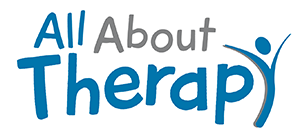Tools to Help Your Child Transition to Baby Foods
Transitioning from the bottle to stage 1 baby foods can be tough, especially if your child has oral sensory aversions, is having difficulty with weight gain, or has a history of an NG or G-tube or currently has one. And for parents that are ready to hit the ground running with table foods, The American Academy of Pediatrics suggests waiting until your child is at least 6 months of age.
1.One indicator that your child may be ready to start trying stage 1 foods is that they are able to sit up with a little support and they have good head control. Positioning is very important for feeding. Children need to feel adequately supported in order for them to manage the task of eating. Having a consistent place your child eats is also important for establishing a mealtime routine. A high chair can be a great place to feed your child. Make sure your child can sit up in the chair without leaning to one side or leaning forward. If they look like they may need some extra support, a wrapped up towel can be placed on the side they are leaning to.
2. Encourage sensory play throughout your child’s day and before eating. This can include touching sand, mud, grass, water, shaving cream, finger paint, etc. Having your child touch different textured things with their hands will help them to eventually accept different textured things on their lips and in their mouth.
3. In addition to sensory play, your child may need to warm up to the feeling of new things in their mouth. Even if your baby doesn’t have any teeth yet, get in the habit of “brushing” their gums with a washcloth or rubber baby toothbrush. This will help prepare your child for eating different textured foods as well as prepare them for tooth brushing once they have teeth. Other items that offer oral sensory stimulation are vibrating teethers (they come in grape, strawberry, or corn shapes!) or a gum brusher such as the NUK brush.
4. Getting your child used to a spoon in their mouth can be difficult. Use a spoon that is appropriately sized for your child’s mouth and that isn’t too deep. I prefer to use a shallow rubber or plastic spoon. A spoon can feel a lot different from a nipple, bottle nipple, and pacifier. Start with getting your child used to the feel of a spoon in their mouth by placing a bit of breast milk or formula on the spoon before putting the spoon in their mouth.
5. Although most children don’t start feeding themselves until about 13-18 months of age, have your child help bring the spoon to their mouth to facilitate participation in feeding. This gives them the visual cue that food is coming and to open their mouth, and it also helps facilitates development of fine motor and visual motor skills. Refillable food pouches with a spoon spout and bottles with a spoon spout can be a little easier for your child to grasp. They also eliminate the step of scooping the food, which can be difficult for a young eater. These can be great tools to help your child learn to be participants in their feeding experience.
I hope you and your baby find these tools helpful! Remember, feeding is a slow process. Be consistent and don’t get discouraged.
